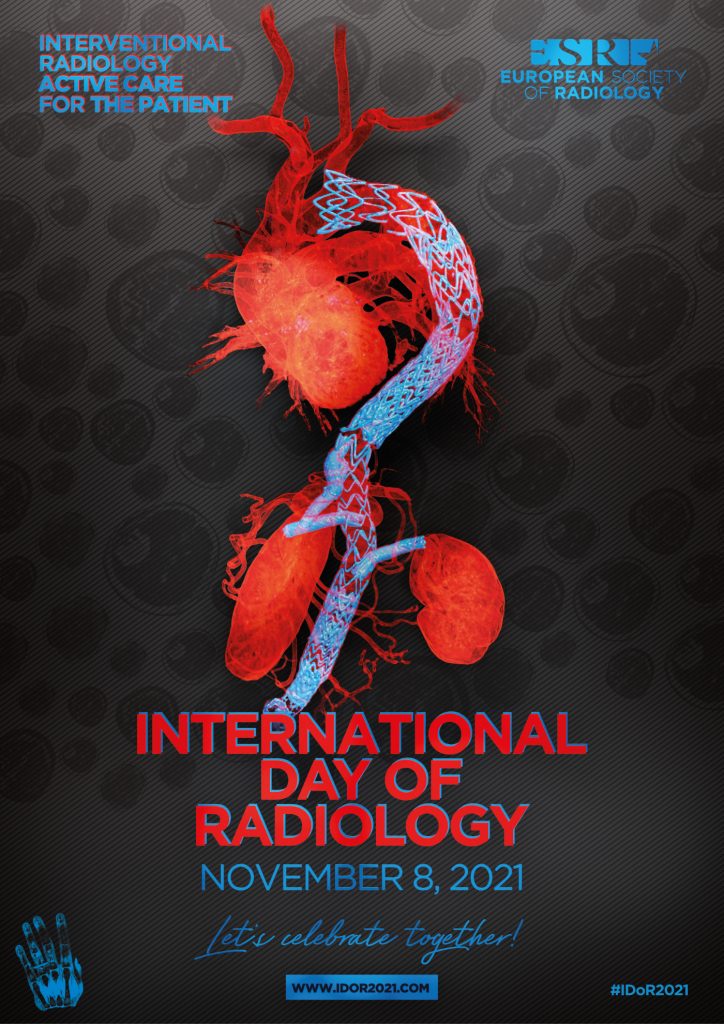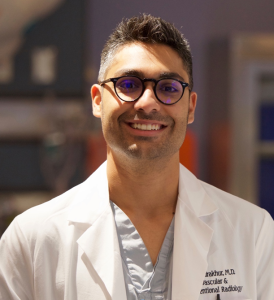 The International Day of Radiology #IDoR2021 is celebrated on November 8 with the aim of building greater awareness of the value that radiology contributes to safe patient care and improving public understanding of the vital role radiologists and radiographers play in the healthcare continuum. In 2021, the International Day of Radiology is dedicated to Interventional Radiology and its essential role in treating patients.
The International Day of Radiology #IDoR2021 is celebrated on November 8 with the aim of building greater awareness of the value that radiology contributes to safe patient care and improving public understanding of the vital role radiologists and radiographers play in the healthcare continuum. In 2021, the International Day of Radiology is dedicated to Interventional Radiology and its essential role in treating patients.
As the world continues to face the challenges posed by COVID-19, it is extremely important to acknowledge the key role that medical imaging has in medicine, not only during unforeseen circumstances such as the pandemic, but also on a daily basis in all areas of patient care. Interventional radiology is a unique and growing sub-specialty that helps and protects patients each and every day.
What can you do?
- Follow our social media accounts on Twitter and LinkedIn. We partnered with the Cardiovascular and Interventional Radiological Society of Europe (CIRSE) and the Society of Interventional Radiology (SIR) to share educational resources and information about the Interventional Radiology and to raise awareness about the benefits of minimally invasive treatments with patients, healthcare professionals, decisions makers, and the public at large. Check out our CAIR Initiative on the website for related content and share with your network!
- NEW! We will be creating member profiles to feature on our website and in our CAIR Express – let us know why you chose Interventional Radiology, what a typical day looks like, what are the most challenging and rewarding aspects of caring for patients and anything you’d like to share with our editors by emailing us at cairservice@cairweb.ca.
Why Interventional Radiology?

Dr. Ani Mirakhur, FRCPC (DR), FRCPC(IR), Calgary, AB
How did I become an IR?
I was first exposed to interventional radiology in my second year of medical school during a gastroenterology observership. The GI attending asked me to follow his bleeding patient (after a failed endoscopy) to IR for an embolization. I was hooked! I was fortunate enough to land a good residency and an excellent fellowship program and I have been in practice for over 5 years now.
Why I love practicing as an IR?
Diversity of disease and organ-systems:
Each day I work with a diverse group of patients and physicians. Some days are filled with complex PAD interventions (SAFARIs, DVAs, thrombolysis, etc), organ-sparing visceral aneurysm treatment , fenestrated EVARs (with vascular surgery colleagues) and dialysis interventions. On other days, I treat vascular malformations, do VTE interventions as well as PAVM, prostate, varicocele, pelvic congestion and uterine embolizations. And not to mention, bread and butter IR including venous access, drainages, biopsies and emergent embos/TIPS for bleeding patients. In my experience, very few specialists work with as broad an array of anatomy, and disease as an IR.
Diversity of practice environment:
As IRs, most of us are excited by the prospect of performing life-saving procedures in very sick patients. On the other hand, outpatient interventions to improve a patient’s quality of life can also be fulfilling. IR is one of the very few specialties, where the practitioner can obtain a balanced exposure to both the acute care and outpatient worlds.
Innovation and collaboration:
IR, in many ways, is the wild west of medicine. You learn a core set of skills and can repurpose your skillset to solve any number of problems in real time. There are tons of opportunities for academic research and/or working with industry. I personally have had opportunities to work with colleagues from other specialties as well as industry, on projects related to device and procedure development.

Dr. Brad Hnatiuk, FRCPC(DR), FRCPC(IR), Edmonton, AB & family
IR is the perfect combination of image interpretation, hands-on skills, and patient interaction. Most patients are extremely happy after a minimal invasive procedure that can often greatly improve a patient’s quality of life. This positive feedback can result in great job satisfaction. As IRs, we are considered an integral part of many clinical pathways in Edmonton. These are a few of the reasons why I love being an interventional radiologist.